Rotating Exhibits:
Current Feature: A temporary exhibit of black and white photos by A.M. "Pete" Wettach which supplements the permanent exhibit of Wettach photos which are framed and hanging in our Community Room for all to see.
Through six decades, Wettach took thousands of photographs, most with a Graflex camera that used 5- by 7-inch negatives. The images recorded the daily lives of Iowa farm families in the mid-20th century and are a visual history of life on the farm during the Depression, World War II and the post-war years. Come visit us soon to see some of Wettach's best!
Coming Soon:
"From our Farm to your Fridge" will detail the legacy of dairy scion and Johnson County native, Jack Swaner. The exhibit will officially open on Tuesday, July 8th. Hours are 10am until 5pm.
TEMPORARY EXHIBITS
Don't miss out on our constantly changing "Whatzzat?!" mini exhibits that showcases a recently donated artifact and provide facts and information about the object for your viewing pleasure. You'll never know what might appear next!
PERMANENT EXHIBITS
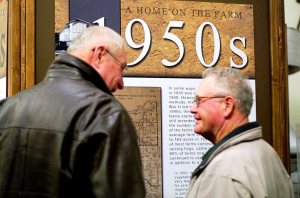 A Home on the Farm: Changes in Farm Life in the Mid-Twentieth Century
A Home on the Farm: Changes in Farm Life in the Mid-Twentieth Century
By the turn of the twentieth century, Iowa had been transformed from a diverse habitat of prairies, wetlands and forest to a land overrun by the plow. Even today, Iowa’s identity is associated with farming. Some of the greatest changes in the industry came about between the middle half of the twentieth century with the advent of electricity and plumping, mechanized machinery, the telephone and the radio. But it wasn’t just technology that changed farming during this time period – two world wars, economic hardships brought on by a Great Depression, rising urbanization and the changing nature of farming from small family farms to corporations brought on defined changes to the landscape in Johnson County.
This exhibit traces some of those developments in farming and country life from the farmers themselves. With the inclusion of artifacts from the time period, maps, and photographs as well as a chance for visitors to get a feel for what it was like back then as we dig up and explore an agricultural history of the county during the mid-twentieth century and how it has defined the future of farming.
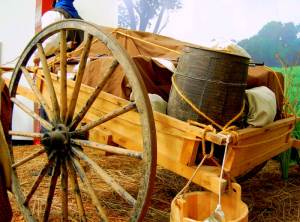 They Walked to Zion: The Mormon Handcart Trail: 1856-1857
They Walked to Zion: The Mormon Handcart Trail: 1856-1857
Between June 9, 1856 and June 13, 1857, 650 handcarts made the journey in an average time of 109 days (16 weeks) from Iowa City to Salt Lake City. At that time, Iowa City was the westernmost point on the railroad in Iowa, so upon departing the train, the Mormons, who sought a place where they were free to practice their contested religion and beliefs, set up camp just west of town and built handcarts in order to transport their most valuable supplies to Utah. Today, the site is home to the Mormon Handcart Park.
In 1967, a group of residents in Iowa City and Coralville established the Mormon Trek Memorial Foundation, which evolved later into the Johnson County Historical Society. A major north-south street connecting Iowa City with the adjoining suburb Coralville is named Mormon Trek Boulevard.
The exhibit contains a full-size diorama depicting a handcart pioneer family. Interactive features include a sound byte of Mormon music, a reading of journal entries and more depth into the hardship of the journey. Funding for the $12,000 diorama was made in part by a joint effort between the JCHS, the Mormon Historic Sites Foundation and local Church members. **More information can be viewed from this article.
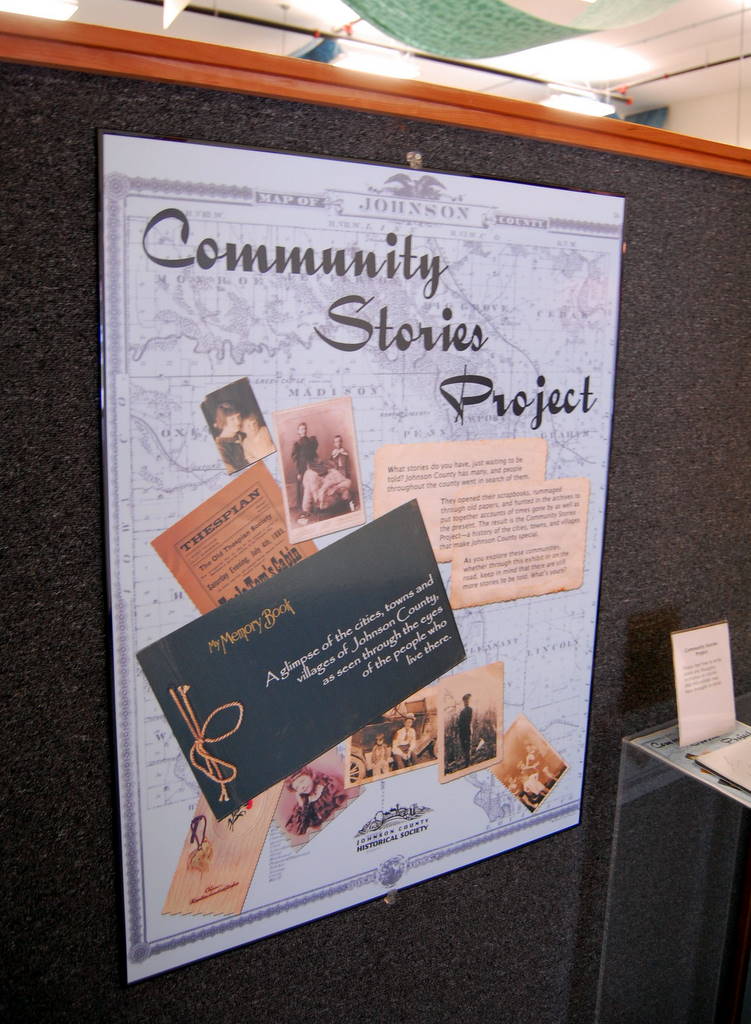 The Johnson County Community Stories Project & Township Maps
The Johnson County Community Stories Project & Township Maps
They opened their scrapbooks, rummaged through old archives, and hunted in the archives to put together accounts of time's gone by as well as the present. The Community Stories Project offers a glimpse of the cities, towns and villages of Johnson County, Iowa as seen through the eyes of the people who live there. With aided research and artifacts, the exhibit promotes the uniqueness of Johnson County and encourages visitors to see it through thier own eyes. Questions are abound: Are there hills in Hills? How many "Frys" live in Frytown? Is it true that Coralville once had coral reefs? Where's Elmira and does it still exist?
In addition, you can view enlarged township maps of Johnson County from 1900, which provides a teasure trove of information about the townships and communities of the county during the turn of the century.
As you explore these communities, whether through this exhibit or on the open road, keep in mind that there are still more stories to be told. What's yours?
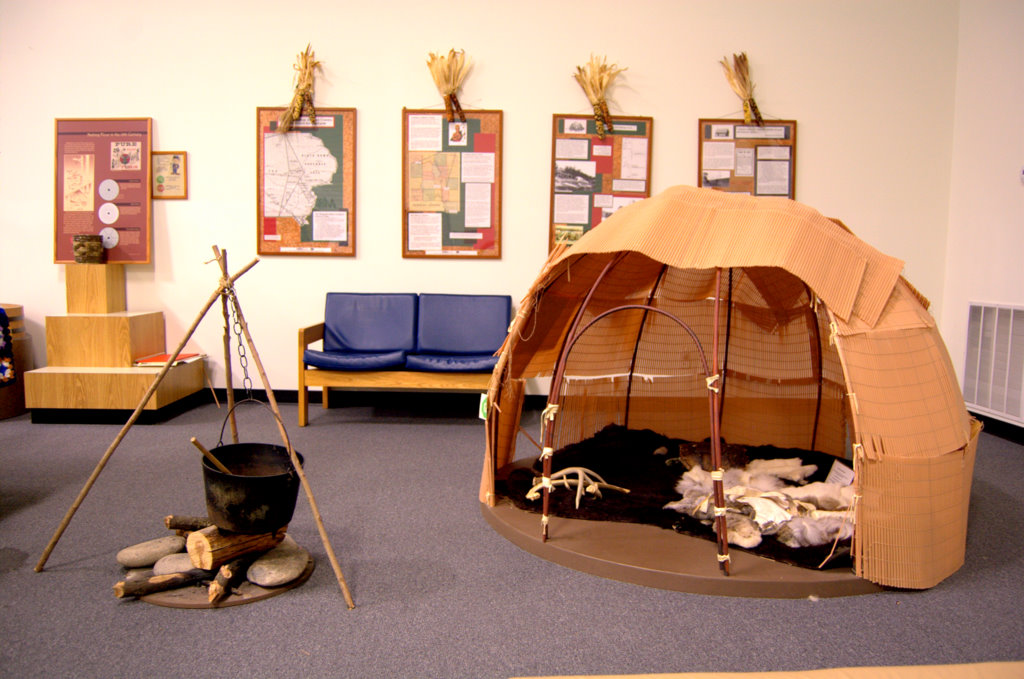 The Mesquakie in Johnson County: A Revervence for the Earth
The Mesquakie in Johnson County: A Revervence for the Earth
Originally, the Mesquakie tribe held lands in Wisconsin and were allied with the French. When the French sold their lands to the United States in the Louisiana Purchase, they were quickly pushed out of Wisconsin and into Iowa by the rapidly expanded United States which had extended its borders to the Mississippi River. Between 1803 and 1846, the Mesquakies lived in Iowa and continued their way of live unchanged from the previous century, but the white man's thirst for more land and conflicting ways of life soon would force the Mesquakie to move again further west.
The exhibit showcases the unique lifestyle of the Mesquakie tribe not only in Johnson County but also in Iowa in general. It pays special attention to the Mesquakie's close affixiation to the land and hints as the struggles that they faced in the early-to-mid nineteenth century. A highlight of the exhibit is a model of a "wickiup" to delight children and adults alike and a replica of a small wood cabin to offer contrasting views of life amoung the Indians and the white settlers.
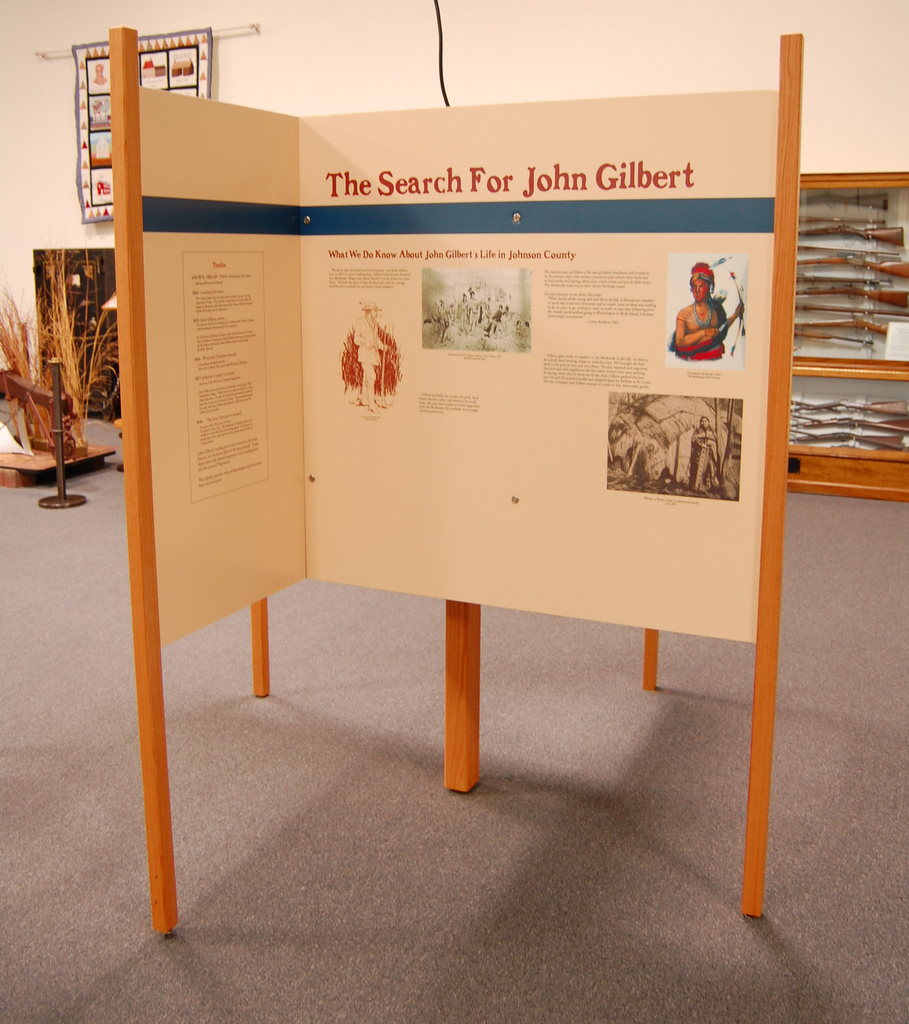 The Search for John Gilbert
The Search for John Gilbert
The founding of John Gilbert's trading post laid the way for settlement of Johnson County. While his first trading post was a failure, his second one proved successful, founding the town of Napoleon, which would later evolve into Iowa City as become the county seat and for several years the capital of the new state of Iowa. Over the years, the search for Gilbert's post has led to immense archeological digs and research has undercovered many pioneer tales and accounts from the time period. This exhibit interpretes John Gilbert's life, his legacy and offers a glance at the pioneering days of Johnson County, Iowa.
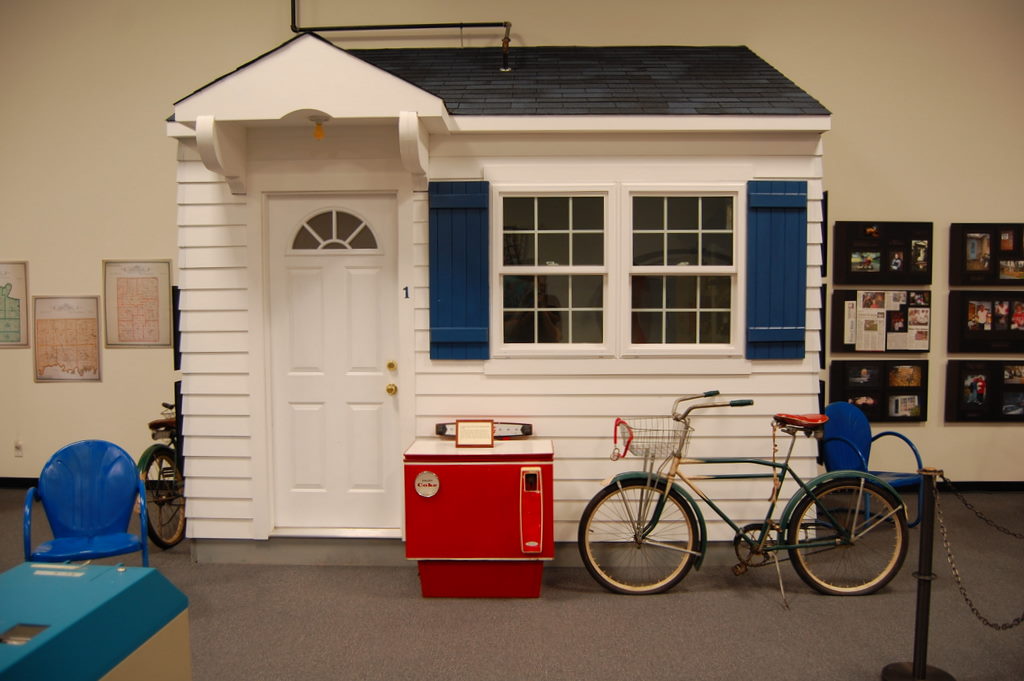 "Little Houses on the Prairie": The Blue Top Motel
"Little Houses on the Prairie": The Blue Top Motel
The Blue Top Cabin Motel is an important piece of Americanna. Operating from 1943 to 1996, this important landmark was razed to make room for the developing Coralville town center. The exhibit is told through the people who owned it and the visitors who inhabited the distinctly build cabins with the famous blue tops and white siding. Artifacts include newspaper clippings and photographs that tell the story in detail of the motel through the years. The exhibit is accompanied by an old coke machine, bicycle and a stunning replica of a Blue Top cottage designed by Jim Stebral Construction, Inc. of Solon, Iowa.
MINI EXHIBITS
Many of our exhibits contain one particular artifact or series but are not as extravagant or detailed as some of our other exhibits. Regardless, they still largely contribute to telling the story of Johnson County history and contain interesting viewing pieces.
The following list contains the names of these "mini-exhibits":
- Prehistoric Points (Indian Arrowheads)
- Breaking Plow and other Pioneer Era farming equipment
- Early Twentieth Century Printing Press
- 1972 Model of Iowa City's Old Capitol
- Calling all Cooks: Johanna Beers
- Irving Weber
- Pioneer Mill & Safe
- Arno P. LaBudde Gun Collection
- Evolving through 200 Years (Johnson Co. General History, with various maps)
- ...and much more...
resources
Click here to learn about our outreach resources.



